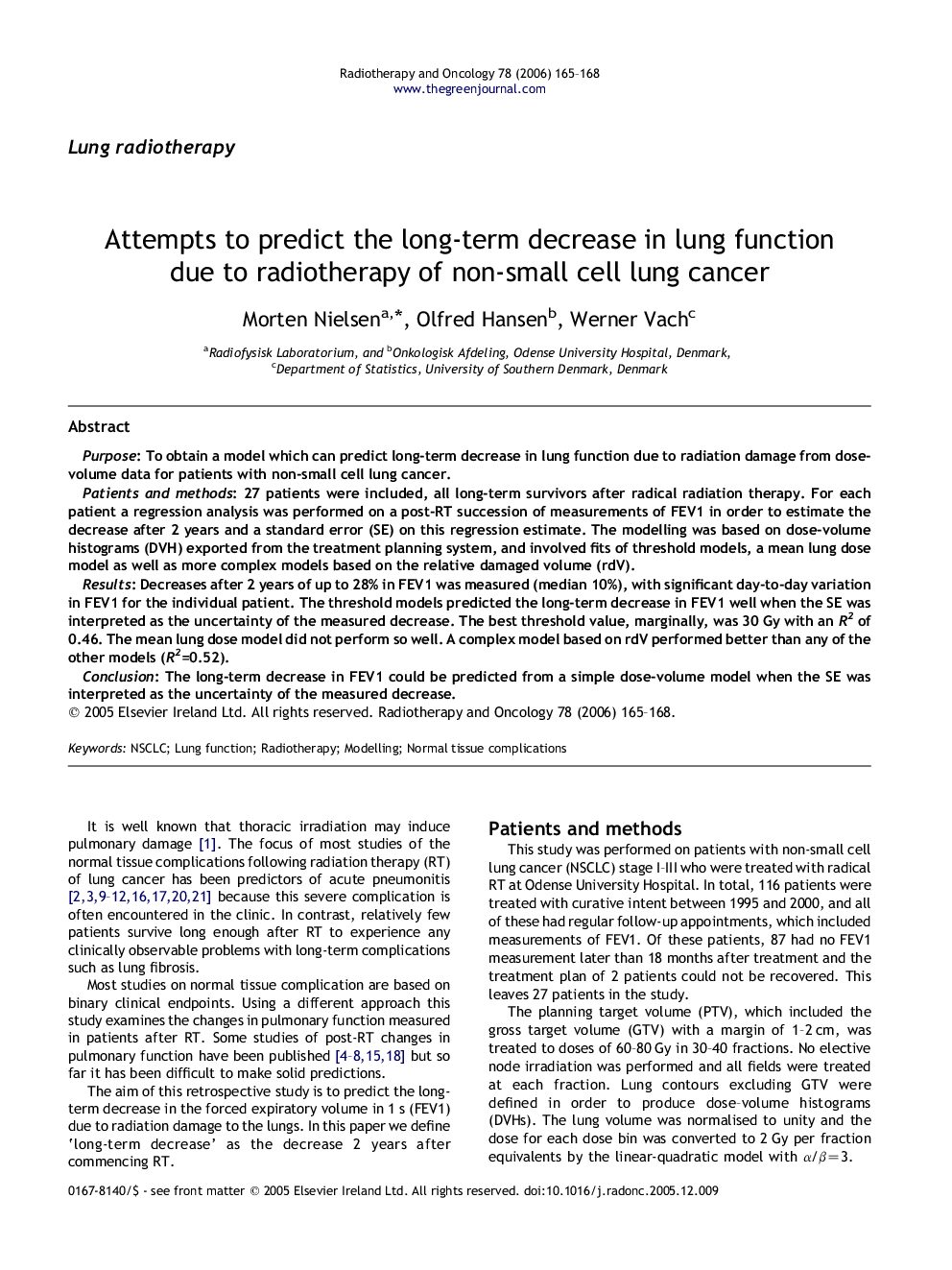| Article ID | Journal | Published Year | Pages | File Type |
|---|---|---|---|---|
| 2161669 | Radiotherapy and Oncology | 2006 | 4 Pages |
PurposeTo obtain a model which can predict long-term decrease in lung function due to radiation damage from dose‐volume data for patients with non-small cell lung cancer.Patients and methods27 patients were included, all long-term survivors after radical radiation therapy. For each patient a regression analysis was performed on a post-RT succession of measurements of FEV1 in order to estimate the decrease after 2 years and a standard error (SE) on this regression estimate. The modelling was based on dose-volume histograms (DVH) exported from the treatment planning system, and involved fits of threshold models, a mean lung dose model as well as more complex models based on the relative damaged volume (rdV).ResultsDecreases after 2 years of up to 28% in FEV1 was measured (median 10%), with significant day-to-day variation in FEV1 for the individual patient. The threshold models predicted the long-term decrease in FEV1 well when the SE was interpreted as the uncertainty of the measured decrease. The best threshold value, marginally, was 30 Gy with an R2 of 0.46. The mean lung dose model did not perform so well. A complex model based on rdV performed better than any of the other models (R2=0.52).ConclusionThe long-term decrease in FEV1 could be predicted from a simple dose-volume model when the SE was interpreted as the uncertainty of the measured decrease.
